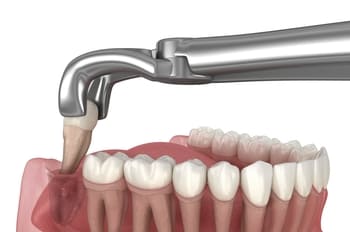Having straight teeth boosts your confidence and promotes better oral health. However, many people hesitate to seek professional orthodontic treatments due to cost, time commitment, or fear of braces. Fortunately, there are several ways to straighten teeth naturally at home. While metal braces and clear aligners are often the first treatments to come to mind, natural and DIY approaches can help gently adjust minor misalignment over time.
In this article, we’ll explore various natural teeth straightening methods, offer insight into maintaining proper oral health, and discuss when to consult a dental professional for more advanced care.
Understanding Why Teeth Become Misaligned
Before learning how to straighten teeth at home, it’s essential to understand why teeth become misaligned in the first place. Knowing the root cause can help guide your approach to straightening teeth naturally and achieving long-term results.
1. Genetics and Heredity
One of the most common reasons for crooked teeth is genetics. Just like eye color or height, the alignment of your teeth can be inherited. If your parents or grandparents had misaligned teeth, you might be predisposed to the same issue. Genetics can affect the size and shape of your jaw, impacting how your teeth grow and align. Straightening teeth may take time for individuals dealing with hereditary misalignment, but consistency with natural methods can still make a noticeable difference.
2. Thumb-Sucking and Prolonged Pacifier Use
Childhood habits like thumb-sucking or using pacifiers can also lead to misaligned teeth. These habits pressure the developing teeth, often pushing them out of their natural position. While this typically happens during the early stages of development, the long-term effects can last into adulthood. Early intervention, including efforts to naturally straighten teeth, can prevent these issues from becoming more pronounced.
3. Jaw Development
Sometimes, misalignment is due to differences in jaw growth. If the upper and lower teeth develop unevenly or the jaw is too small to accommodate all the teeth, crowding or gaps can occur. In these cases, naturally straightening teeth can help alleviate mild to moderate alignment issues, particularly in younger individuals whose jaw is still growing.

4. Wisdom Teeth Growth
Another common cause of misalignment is the growth of wisdom teeth. When wisdom teeth begin to emerge, usually in your late teens or early twenties, they can cause crowding and shift previously aligned teeth. While not everyone will experience issues from wisdom teeth, those who do may find the teeth in the front of the mouth become crooked. In cases like this, attempting to straighten teeth naturally might not be as effective without first addressing the wisdom teeth, often requiring their removal.
5. Facial Trauma or Injury
Accidents or injuries that involve the jaw or teeth can also lead to misaligned teeth. If the teeth are knocked out of position, they may not realign naturally without intervention. In these cases, naturally straightening teeth may require a combination of methods, such as gentle exercises, the use of aligners, or, in some cases, professional guidance.
6. Poor Oral Habits
Poor oral habits, such as grinding or clenching teeth (bruxism), can also contribute to misalignment over time. These habits place extra stress on the teeth and can cause them to shift. If you suspect that bruxism is contributing to your alignment issues, working on reducing stress, wearing a night guard, and practicing natural alignment methods like exercises can help straighten teeth and maintain their position naturally.
Natural Methods to Straighten Teeth
While professional orthodontics remains the gold standard for correcting misaligned teeth, here are several natural teeth straightening options provided by the Available Dental Care dentist in Campbelltown, NSW can help minimize or prevent the worsening of crooked teeth.
1. Orthodontic Exercises for Naturally Straightening Teeth
You might not associate exercise with teeth straightening, but targeted exercises can gently shift teeth over time. Exercises such as lightly pressing on crooked teeth or using the tongue to align teeth can encourage small adjustments. These exercises can help improve overall teeth alignment without using orthodontic appliances.
2. Using Dental Bands for Teeth Alignment
Dental bands, often marketed as a part of DIY teeth straightening kits, are small elastic bands designed to apply pressure on misaligned teeth. These bands can slowly shift crooked teeth into a more desirable position by consistently applying force.
However, it’s essential to exercise caution when using dental bands. While this method can straighten teeth at home, improperly using bands can damage tooth enamel or worsen alignment issues. If you’re considering this option, it’s crucial to understand the potential risks.
3. Teeth Straightening Kits
Several teeth straightening kits are available online and in stores to help people straighten their teeth without metal braces. Many of these kits use clear aligners and custom-made trays that gradually shift teeth into alignment. These aligners are a popular DIY teeth straightening option because they are discreet and relatively easy to use.

However, clear aligners from a professional orthodontist typically offer a more tailored and monitored approach. Follow instructions carefully and consult a Complete Dental professional in Coorparoo, QLD before starting a teeth straightening kit.
The Role of Oral Health in Teeth Alignment
Maintaining good oral health is a crucial component of natural teeth straightening. Proper brushing, flossing, and regular dental checkups significantly prevent crooked teeth and maintain the alignment of your upper and lower teeth.
1. Brushing and Flossing for Alignment Support
Good oral hygiene practices help support healthy teeth and gums, preventing gum disease and decay that could worsen misaligned teeth. Poor oral health can weaken your gums and cause tooth movement, leading to more severe misalignment.
2. Diet for Strong Teeth and Alignment
A diet rich in calcium, vitamin D, and other minerals helps strengthen your teeth and gums. A well-balanced diet can promote strong bones and tooth enamel, making it easier for your teeth to hold their position and resist shifting.
It is also essential to avoid excessive sugar, acidic foods, and hard foods that may damage teeth or weaken tooth enamel.
Common DIY Methods to Avoid
While there are many safe ways to gently straighten teeth naturally, some DIY teeth straightening techniques can be harmful if done incorrectly. Here are a few methods that should be avoided or approached with caution according to a dentist in Norman Park, NSW:
1. Rubber Bands for Teeth Straightening
While rubber bands might seem like an affordable alternative to orthodontic treatment, they can do more harm than good. When not used correctly, they can cause permanent damage to teeth and gums, including tooth loss.
2. Pushing or Pulling Teeth with Your Hands
Using your hands to push or pull crooked teeth to straighten them can be dangerous. This can cause serious damage to your tooth enamel and gums, leading to infection or tooth loss. Always use gentle pressure when practicing teeth straightening exercises and avoid excessive force.
Can You Straighten Teeth Naturally Without Braces?
While traditional metal braces remain reliable for severe misalignment, natural methods exist to straighten teeth, especially if the misalignment is minor. These methods might take longer than orthodontic treatment but can help you achieve straight teeth without braces over time.
Clear Aligners vs. Metal Braces
Regarding orthodontic treatments, clear aligners, and metal braces are two of the most popular options for achieving straighter teeth. While both methods are effective, they offer different advantages and drawbacks depending on the individual’s needs. Choosing the right option depends on the complexity of your misalignment, lifestyle, and personal preferences. Let’s break down the key differences between clear aligners and metal braces to help you decide which might be better for your situation.
1. Aesthetics and Appearance
One of the most significant differences between clear aligners and metal braces is appearance. As the name suggests, clear aligners are made of a nearly invisible plastic material that fits snugly over your teeth. This makes them attractive to adults and teens who prefer a more discreet method of straightening teeth. You can wear aligners without feeling self-conscious, as they are barely noticeable in day-to-day interactions.
On the other hand, metal braces are more visible. Traditional braces consist of metal brackets, and wires affixed to the front of your teeth. While modern braces have become smaller and sleeker, they are still much more noticeable than clear aligners. Some individuals, especially younger patients, might embrace this look and customize their braces with colorful bands. Still, for many adults, the discreet nature of clear aligners is a significant advantage.
2. Comfort and Convenience
Comfort is another area where clear aligners often have the upper hand. Made from smooth plastic, clear aligners are custom-fitted to your teeth and typically cause less irritation to the inside of your mouth. Since there are no sharp metal parts, you won’t have to worry about cuts or sores, which are more common with metal braces. Metal braces can sometimes cause discomfort, particularly when wires are tightened during adjustments or when the metal brackets rub against the cheeks and gums.

Clear aligners also offer convenience. They are removable, so you can take them out when eating, drinking, brushing, or flossing. This makes maintaining oral health much easier compared to metal braces, which can trap food and require more meticulous cleaning. Removing aligners can also be a significant advantage for special occasions or important events where you may not want to wear them.
However, with this convenience comes responsibility. Clear aligners must be worn for at least 20 to 22 hours daily to be effective. Your progress can be delayed if you’re not diligent about wearing them. In contrast, metal braces are fixed in place, meaning they’re always working, which can sometimes result in faster outcomes for more complex misaligned teeth.
3. Effectiveness for Complex Cases
Both clear aligners and metal braces can successfully correct a wide range of teeth alignment issues, but metal braces are often the preferred choice for more severe or complex cases. Metal braces are highly effective for addressing significant bite issues, extreme crowding, or tooth rotations that require precise control. They allow orthodontists to apply more force and make detailed adjustments, making them a reliable option for cases involving significant misalignment.
Clear aligners, on the other hand, are best suited for mild to moderate cases of crooked teeth. While technological advances have expanded the range of conditions that clear aligners can treat, including some bite issues, they are still limited compared to metal braces’ control. If you have a more complex treatment plan, metal braces might be a better option to ensure optimal results.
4. Treatment Duration
When considering how long you’ll need to wear your orthodontic appliance, it’s essential to recognize that the complexity of your case plays a significant role. Clear aligners can work just as quickly as metal braces for simpler cases of misaligned teeth, often producing results within 12 to 18 months. In some cases, clear aligners may even be faster, particularly when patients follow their treatment plan closely and wear their aligners for the recommended amount of time each day.
However, metal braces may be the faster option for more complex cases. Since they provide more control over tooth movement, they can often achieve the desired results in less time than aligners would for cases involving significant misalignment or jaw correction. Additionally, because metal braces are always working (as they cannot be removed), they may reduce treatment time for certain patients compared to clear aligners, which rely on patient compliance.
Long-Term Considerations and When to Seek Professional Help
Even if you can straighten your teeth at home using natural methods, regular checkups with a dental professional are essential to maintain your progress. While some individuals may successfully straighten their teeth using at-home methods, others may find that their condition requires professional intervention.
1. Consulting with a Dental Professional
If you experience severe discomfort, notice no improvements, or suspect damage to your teeth or gums, seeking advice from a Plympton dentist at Cross Road Dental is critical. They can offer a comprehensive treatment plan and discuss whether you need professional intervention, such as braces or wisdom teeth removal.
2. Prevent Crooked Teeth from Worsening
Even after straightening your teeth naturally, your teeth can still shift back over time. Wearing a retainer, practicing good oral health habits, and staying mindful of how habits like grinding your teeth at night can affect your alignment will help preserve your progress.
Final Thoughts: Achieving Straight Teeth at Home
Learning how to get teeth straight at home can be an empowering journey, particularly for those looking to avoid the financial burden or invasiveness of traditional orthodontic treatments. While natural teeth straightening methods like exercises, clear aligners, and teeth straightening kits can make a difference, it’s essential to approach these methods cautiously.
Understanding the root cause of your crooked teeth, maintaining good oral health, and knowing when to seek professional advice will help you achieve long-lasting results. Although naturally straightening teeth requires patience, it can be a rewarding and cost-effective approach to achieving a healthier, more confident smile.
If you’re exploring teeth straightening options, remember that while minor adjustments can be made at home, professional input from a dentist in Townsville, QLD ensures your treatment plan is safe and effective.
By taking a mindful, informed approach to straightening your teeth, you can maintain a beautiful, functional smile for years.
References
https://www.byte.com/community/resources/article/natural-straightening#:~:text=There%20is%20no%20safe%20way,won’t%20improve%20your%20smile.
https://www.healthline.com/health/dental-and-oral-health/straighten-teeth-without-braces
https://www.wikihow.com/Straighten-Your-Teeth-Without-Braces

